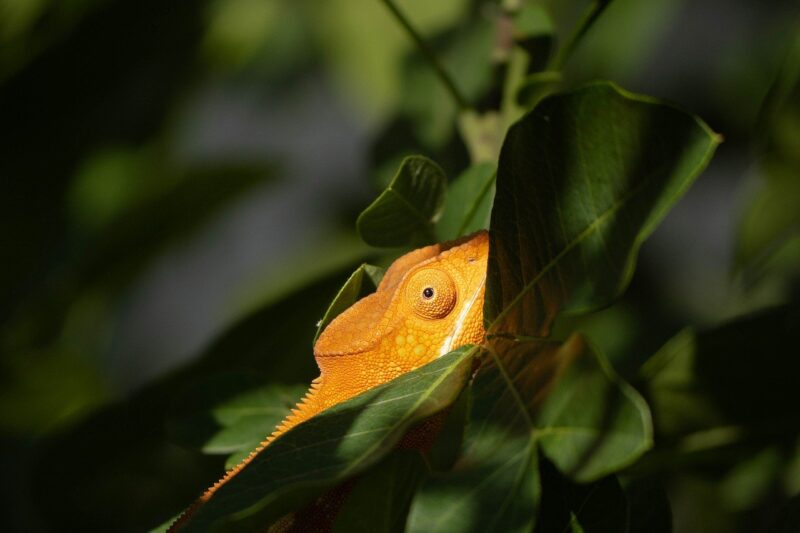Wildlife Wonders: 15 Unbelievable Animal Facts That Will Shock You
November 18, 2024

When it comes to the animal kingdom, there are countless wonders that continue to amaze and astonish us. Animals display unique behaviors, adaptations, and abilities that often seem to defy logic. From the depths of the oceans to the heights of the treetops, the world of wildlife is rich with surprises. In this article, we will explore 15 unbelievable animal facts that are sure to shock you, offering a glimpse into the astonishing lives of creatures we share our planet with.
1. The Immortal Jellyfish
The Turritopsis dohrnii, more commonly known as the immortal jellyfish, has the extraordinary ability to revert to its juvenile form after reaching maturity. This unique biological process, known as transdifferentiation, allows it to effectively escape death and start its life cycle anew. By reverting to its younger state, this jellyfish can potentially live indefinitely, making it one of the most fascinating and resilient creatures in the ocean.
2. The Heart of a Blue Whale
The blue whale is not only the largest animal on the planet but also has the largest heart. Weighing around 400 pounds (181 kilograms), a blue whale’s heart is about the size of a small car. It pumps approximately 60 gallons (227 liters) of blood with each heartbeat, providing the massive creature with the necessary circulation to sustain its size and immense energy needs.
3. Elephants Can Identify Human Emotions
Elephants are known for their intelligence and emotional depth. Studies have shown that elephants can differentiate between human emotions based on vocalizations. This means they are capable of recognizing whether a human voice conveys anger, happiness, or sadness. Their empathetic nature allows them to respond accordingly, showcasing the complex social and emotional dynamics of these magnificent creatures.
4. Frogs Can Freeze Without Dying
Some species of frogs, such as the wood frog, have the remarkable ability to survive being frozen solid for weeks during harsh winter conditions. Their bodies enter a state of suspended animation, slowing down their metabolism until temperatures rise again. Once thawed, these frogs can resume normal activity, showcasing a fascinating adaptation for survival in extreme environments.
5. A Group of Flamingos is Called a ‘Flamboyance’
The term ‘flamboyance’ perfectly encapsulates the vivid colors and striking appearances of flamingos. These social birds are often found in large groups, and their collective name reflects both their beauty and their social nature, as they thrive on camaraderie in their wetlands habitats.
6. Giant Tortoises Live Over 150 Years
Some species of giant tortoises, such as the Aldabra giant tortoise, can live to be over 150 years old. Their slow metabolism and low stress lifestyle contribute to their longevity. These ancient reptiles are not only remarkable for their age but also for their size, as some can weigh over 1,000 pounds (450 kg).
7. Crows Are Extremely Intelligent Creatures
Crows are often noted for their high intelligence. They can use tools, recognize human faces, and even plan for the future. In experiments, crows have demonstrated problem-solving skills akin to those of great apes. Their black feathers may symbolize mystery, but their mental capabilities are firmly rooted in reality.
8. Honey Never Spoils
Archaeologists have discovered pots of honey in ancient Egyptian tombs that are over 3,000 years old and still edible. Honey’s unique chemical composition makes it resistant to microorganisms and spoilage, allowing it to last indefinitely when stored properly. This timeless food has fascinated humans for centuries, proving to be both delicious and eternal.
9. Octopuses Have Three Hearts
An octopus has three hearts: two pump blood to the gills, where it is oxygenated, and one pumps oxygenated blood to the rest of the body. Interestingly, when an octopus swims, the heart that delivers blood to the rest of the body stops beating, which is one reason these creatures prefer crawling over swimming, as it saves energy.
10. Pigeons Can Recognize Themselves
Research has shown that pigeons possess self-recognition abilities, which is a trait shared by only a few animal species. In studies involving mirrors, pigeons could recognize their reflection and understand that it represented themselves. This cognitive skill challenges traditional views of animal intelligence and self-awareness.
11. Arctic Terns Have the Longest Migration
The Arctic tern holds the record for the longest migration of any bird, traveling about 44,000 miles (70,000 km) each year. From breeding colonies in the Arctic to lush feeding grounds in the Antarctic, these remarkable birds experience two summers a year by following the light of the sun, showcasing their incredible endurance and navigation skills.
12. Starfish Can Regenerate Lost Arms
Starfish, or sea stars, have the intriguing ability to regenerate lost arms. If a starfish loses an arm due to predation, they can regrow it over time. In some cases, they can even regenerate an entire starfish from a single arm, demonstrating remarkable regenerative capabilities.
13. Axolotls Are Builders of Their Own Limbs
The axolotl, a type of salamander, is known for its incredible regenerative abilities that allow it to regrow entire limbs, parts of its heart, and portions of its brain. This unique capability makes axolotls one of the most studied organisms in regenerative medicine, attracting researchers interested in unlocking potential treatments for human injuries.
14. Leafcutter Ants Cultivate Fungi
Leafcutter ants have a unique symbiotic relationship with fungi. These industrious insects cut and collect leaves to cultivate their own fungus gardens, which they use as their primary food source. This fascinating cooperative behavior exemplifies complex interspecies relationships in nature and showcases the intelligence of these small yet efficient builders.
15. The Mimic Octopus Can Imitate Other Sea Creatures
The mimic octopus has the unique ability to imitate the appearance and behaviors of other sea creatures to evade predators. By altering its shape, color, and movement, this octopus can mimic predators like lionfish, flatfish, and even sea snakes, making it a master of disguise in its environment.
Conclusion
The animal kingdom is full of extraordinary facts and extraordinary survival strategies that constantly surprise us. From the remarkable regenerative abilities of axolotls to the migratory patterns of Arctic terns, these animal facts highlight the awe-inspiring diversity of life on Earth. As we continue to learn more about these incredible beings, we can foster a greater appreciation for wildlife and the wonders it holds. Remember, the world around us is filled with extraordinary creatures that are just waiting to surprise us.








